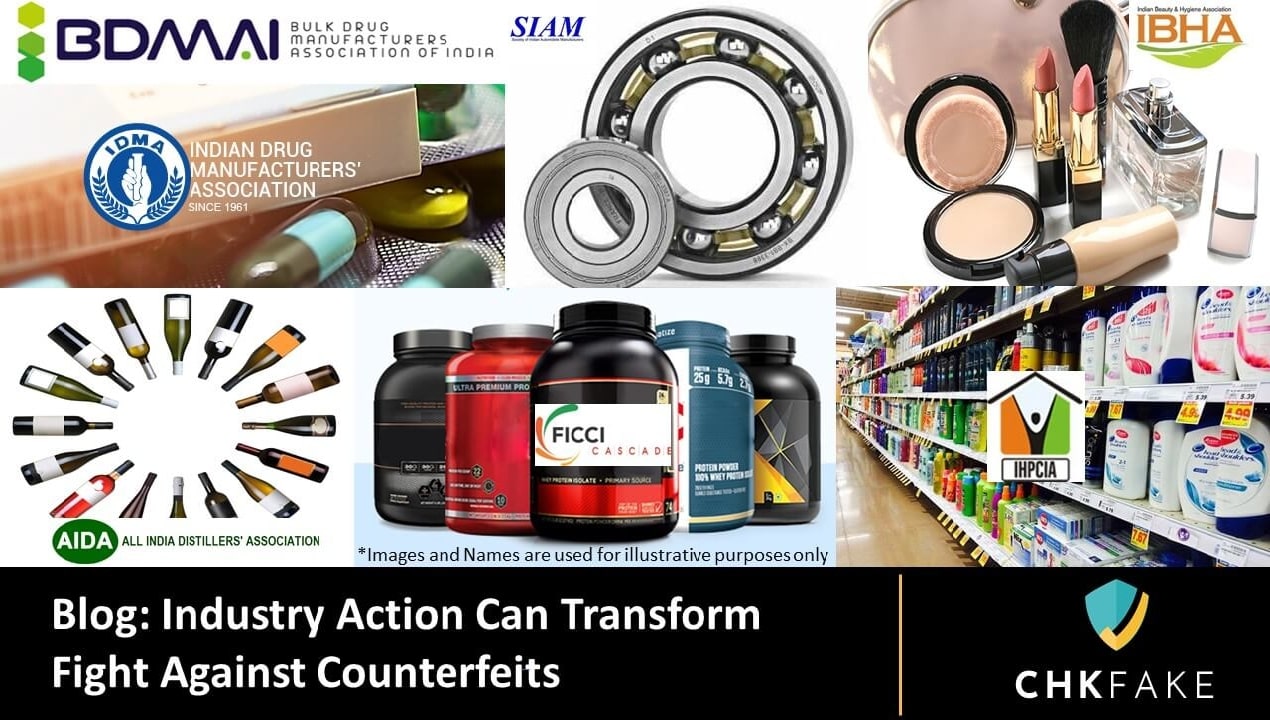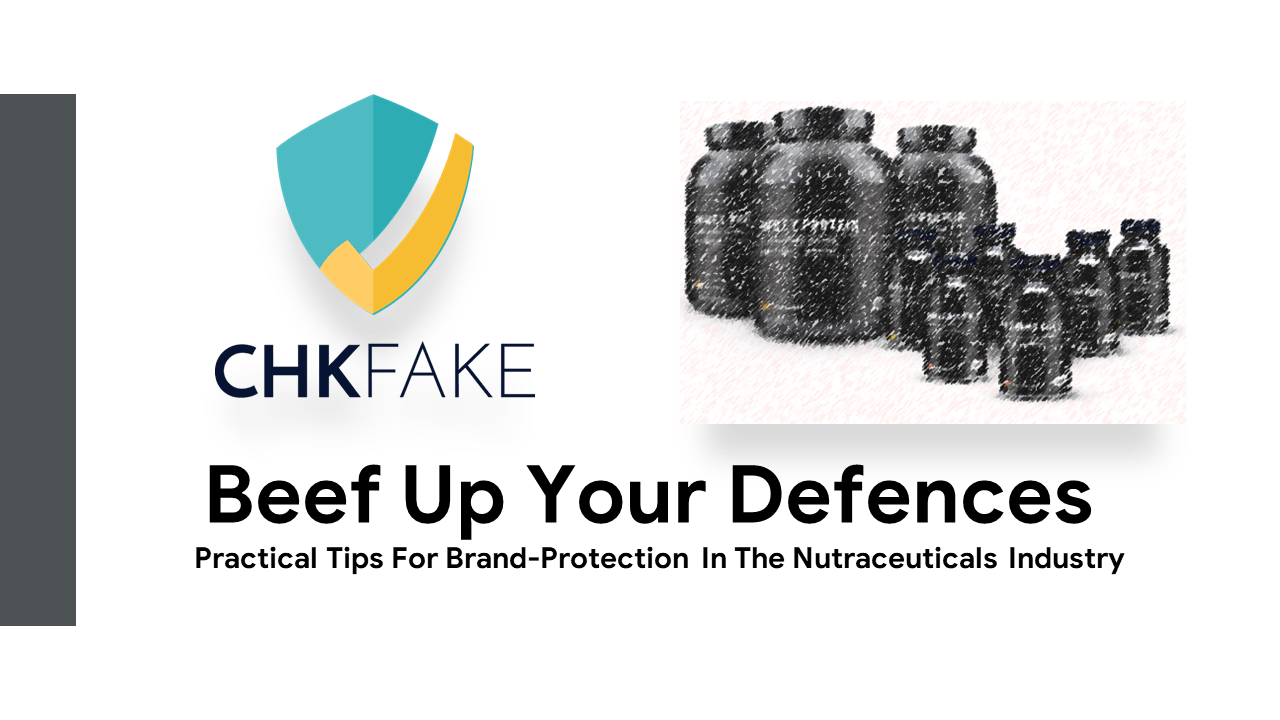While the Covid-19 pandemic has brought the world to its knees, we have been living with a silent pandemic in the form of counterfeit medicines. The World Health Organization (WHO) estimates that counterfeit medicines worth 73 billion euros are traded annually and in some areas in Africa, Asia, and South America, more than 30 per cent of medicines in circulation are fakes.
Online pharmacies hide their true location and deliver globally, targeting developed countries in particular, Half the medicines they sell are fake (est. WHO) and 96% do not comply with National Association of Boards of Pharmacy (NABP) patient safety and pharmacy practice standards or US state and federal laws.
As per WHO, globally more than a million people die every year after consuming counterfeit medicines. Just for context, covid-19 has caused 330 thousand deaths as of 20th May 2020.With counterfeit drugs increasingly finding their way into global distribution chains and ultimately into patients’ mouths, it is essential that pharmaceutical companies have effective enforcement strategies to combat the manufacture and distribution of counterfeit drugs.
With patients globally being deceived into consuming counterfeit and sub-standard drugs, it is important for the pharmaceutical companies, regulators, industry associations, hospitals and healthcare professionals to have coordinated strategies to combat the production and distribution of counterfeit drugs across the entire supply chain.

Top Reasons for Growth of Counterfeit Medicines
1. Limited access to care especially in the developing and under-developed world
2. High-cost of genuine branded medicines
3. Fragmented and complex supply chains with spare capacities
4. Prevalence of Internet Pharmacies
5. Loose legislations
6. Self-medication and availability of prescription medicines as OTC
7. Lack of consumer awareness
8. Advancements in counterfeiting technologies
9 Practical tips for brand-protection in the pharma industry
Here is our list of top 10 things that a pharma manufacturer should follow to make their brand protection/ anti-counterfeiting program a success.
1.Stronger anti-counterfeiting (AC) technology
Technology is an essential part of any brand protection program. The objective is to make your products hard to copy, easy for the customer or investigator to authenticate and help collect evidence that can lead to successful enforcement action.

Image Courtesy: Holosecurity
2.Easy authentication
Facilitate easy verification of genuine products by deploying the latest in authentication technology. Chkfake is a state of the art authentication and reporting platform on which brands can list their products.

Image Courtesy:Chkfake
3.Market Education
Aggressively educate the market on how to verify genuine products. Brands can use a variety of conventional media channels or collaborate with industry associations and government agencies to promote the use of genuine products.

An initiative by Pfizer Malaysia with its Ministry of Health, the Malaysian Urological Association, and Malaysian Pharmaceutical Society that teaches the public how to detect falsified drugs. Image Courtesy: Pfizer.com
4.The power of Industry associations
Industry associations can help where brands struggle, eg. in the areas of customer education, and advocacy with government agencies in terms of enforcement and policy.
A great example of an industry-led effort in the USA is PhRMA. PhRMA represents the leading biopharmaceutical research companies in the USA and leads protection of Intellectual Property for them.

Image Courtesy: PhRMA
Industry associations can also act as a collective front for all pharma brands to engage customers on ‘how to verify genuine medicines’. Brands are otherwise apprehensive in engaging customers directly as they feel customers might link their brand to being heavily counterfeited.
5.Investigations and Legal Action
Use 3rd party legal firms and investigators to increase the presence on the ground to identify the supply chain of counterfeiters as well as take enforcement action including seizures, cease & desist notices, civil suits etc.

Image Courtesy: ETHealth
6.Online Enforcement
Partner with an online enforcement agency, such as Red Points to detect suspicious links selling counterfeits medicines in online pharmacies or marketplaces. Partners such as these use sophisticated technology such as image recognition and seller clustering to efficiently identify counterfeit products and also allow brands to automatically takedown such listings.
7.Enforcement Management
Use an enforcement management tool, such as Chkfake, to capture and manage enforcement leads effectively. Most brands do not have a system in place to capture feedback on counterfeits/ lookalikes from the market. As a result, leads are lost and the brand continues to suffer. An enforcement management tool increases the brand’s enforcement footprint and enables a quick and deterrent action. It also gives the brand access to all enforcement intelligence in one place.

Image Courtesy: Chkfake
8.Partnering with Governments and international agencies
Partner with government agencies and online platforms to drive campaigns against dubious online pharmacies and give confidence to the customers to buy only from the genuine sources.
For example, since 2015, any online pharmacy selling in the UK must be registered with the Medicines and Healthcare products Regulatory Agency (MHRA) and must display the ‘Distance Selling Logo’ on the purchase webpage.

Image Courtesy: MHRA
There are specific initiatives promoted by multiple governments and international agencies (like WHO and Interpol) which are aimed at increasing credibility of genuine medicines and quick identification of fakes.
An excellent example is the “track and trace” serialization guidelines mandated by different governments across the globe. As the number of countries participating in these initiatives increases, the reach of these programs likewise improves.

Image Courtesy: Pharmaceuticalonline.com
9.Focus on substandard products
If a legitimate product is not manufactured according to quality and safety standards or becomes degraded as it travels through its supply chain, it can be ineffective at best or dangerous at worst. Initiatives such as the USP’s Promoting the Quality of Medicines (PQM) program combines the two instances of promoting quality of medicine and avoiding fake medicine distribution and manufacture within the scope of their work and many countries in Africa have benefitted a lot from it.

Image Courtesy: USP.ORG
As suggested above, there are plenty of best practices to draw inspiration from, with new information, technology, and guidelines being revealed on a regular basis, and your organization can go as detailed as your resolve to control this menace allows.Pharmaceutical companies ignore the issue of counterfeiting and low-quality sub-standard drugs at their own peril. Situations like the current pandemic are triggers where the customers become less vigilant and demand-supply gaps create an ideal opportunity for counterfeiters in this lucrative market. Pharma companies must act now before it is too late or costly to recover.
Watch out for my next blog. If you liked what you read, please do share in your network. You can follow my articles on LinkedIn and Twitter, or subscribe to My blog.
_________________________________
Tanmay Jaswal is the Founder of Chkfake, a start-up that is disrupting the anti-counterfeiting industry by creating an eco-system of all stakeholders to join the fight against fakes together. The Chkfake mobile app allows users to verify genuineness of any product irrespective of category or brand.
Tanmay has 26 years of global experience in business leadership, marketing and strategy in companies like Coca-Cola and Shell and is an acknowledged authority on brand protection. He has headed the brand protection function for Shell globally and has extensive experience in this space over the last 8 years.






0 Comments